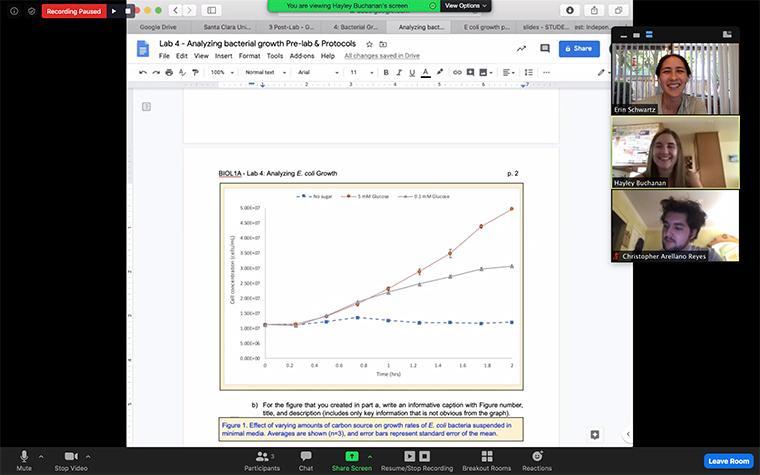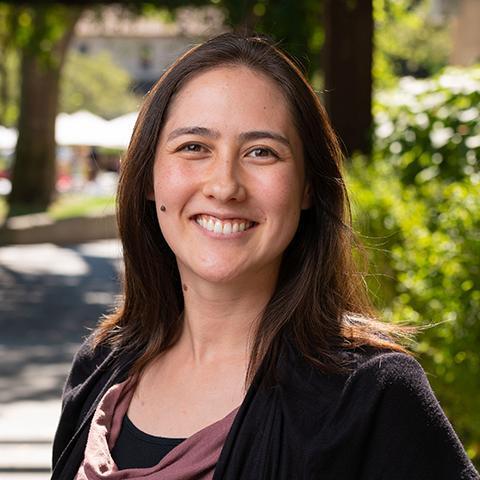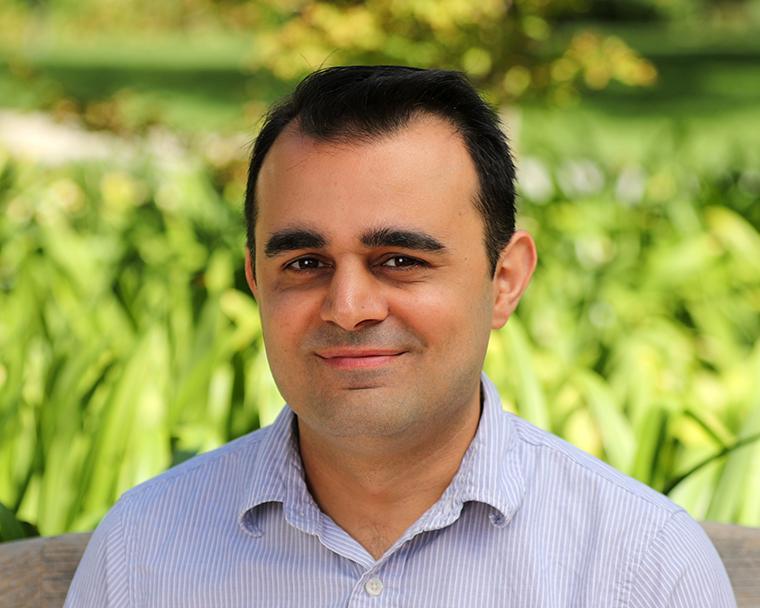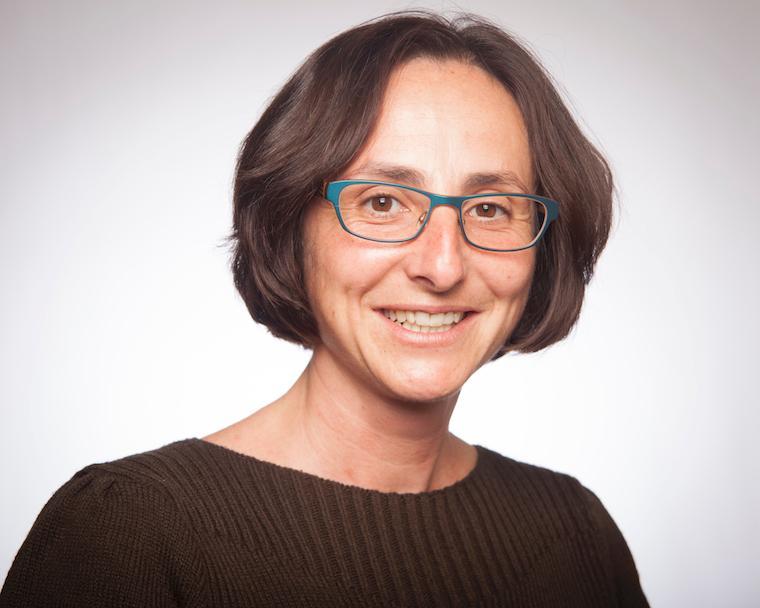
Rising to the Challenge of Virtual Labs
Virtual Labs at Santa Clara University were never what the faculty nor students expected, but with creativity, open mindedness, and diligence, spring quarter opened new doors for an effective, remote learning experience.
By Taylor Pavicich ’21

“In an ideal world, what would this look like?” asked Erin Schwartz, senior lab instructor and coordinator in Biology, about the concept of virtual labs at Santa Clara University. Many faculty were asking themselves this question while they adapted and adjusted their courses to a virtual format as SCU made the decision to be fully online for spring quarter due to the pandemic that was spreading across the globe.
This question was especially relevant to science departments, as an integral aspect of any science education is in-person learning involving a large amount of lab work. When it came time to decipher how labs would play out for spring quarter, John Birmingham, associate dean in College of Arts and Sciences, stated that they “never considered cancelling them, as they are too important for learning in the sciences."
The departments of Biology, Chemistry and Physics all implemented similar methods for remote labs, utilizing synchronous lab sessions led by dedicated faculty. While many aspects of the labs were similar due to the virtual format, each department incorporated unique techniques to cater to their discipline and their students.
Taking advantage of Zoom features, students in biology labs spent a majority of their time working in small breakout groups to collect data and think about broader applications of the science outside of the lab. “Rather than focusing on the technical aspects of the lab,” states Schwartz, “students were able to really dive into the scientific method, data collection, analysis, presentation, and teamwork aspects of working in a research environment.” Looking to fall, they will incorporate new components on lab techniques to expose students to the technical skills as well.
Since feedback is a vital part of learning, Lab Discussions were established by the Biology department to provide a virtual space for students to seek help from their instructor as they worked through lab assignments. The labs also provided space to get peer feedback and check each other’s understanding of the material. Schwartz explains that she made “minimal changes to their summative post-lab assignments and rubrics, which is evidence that we are preparing these students to perform at the same level as students in the in-person labs.”
Organic Chemistry labs used video demonstrations to teach important lab techniques and provided opportunities for students to engage in new ways—by designing their own experimental approaches. Additionally, students in Ray Gipson’s labs used literature to develop their own synthesis. “I think it's a great way to apply the topics that they have been learning in lecture,” says Gipson, an adjunct lecturer in Chemistry. Eric Tillman, Fletcher Jones Professor and chair in the Chemistry Department, expressed that “faculty were extremely dedicated and we feel we did a good job of giving the students a high quality, alternative experience.”
Faculty in the Physics Department developed new material to be used in a virtual format, including an entirely new suite of labs for Physics 13, and a 50-page lab manual with eight new experiments for Physics 32. “Our goal was to replicate the true lab experience as well as possible and include real experiments that students could perform to get their own data to analyze,” said Betty Young, professor and chair of the department.


While most of the physics labs utilized online simulations, some employed household items and even encouraged students to involve family members when doing certain experiments, such as analyzing waveforms sung into a computer microphone. By writing all of the lab manual content, including theory and background sections, lab instructions and suggested analyses, the department tried to ensure that students received a rigorous and clear curriculum.
At the end of spring quarter, students were asked to provide feedback on their virtual lab experience. Many shared that they missed the in-person experience. However, they also appreciated how their instructors worked very hard to bring an alternative solution to the labs on such short notice and that the structure of the labs were straightforward and easy to follow.
Christelle Sabatier, senior lecturer in Biology and director for the Neuroscience program, surveyed her Intro Bio students before and after spring quarter asking them to share one word that described their feelings. While many responses seemed to be ‘anxious,’ ‘nervous,’ and ‘uncertain’ beforehand, remarkably after the quarter had finished, students shared feelings of being ‘accomplished,’ ‘satisfied,’ and ‘confident.’ “I think this demonstrates how amazingly resilient our students are and how well they have risen to the challenges facing all of us this quarter,” says Sabatier.
Navigating through a global pandemic is difficult enough for anyone. While virtual labs will never be a replacement for in person work, the faculty strived to ensure that spring quarter provided effective teaching and support for their students, and will continue to do so as another quarter of remote learning approaches.
Erin Schwartz in a breakout Zoom session with students in her biology lab.